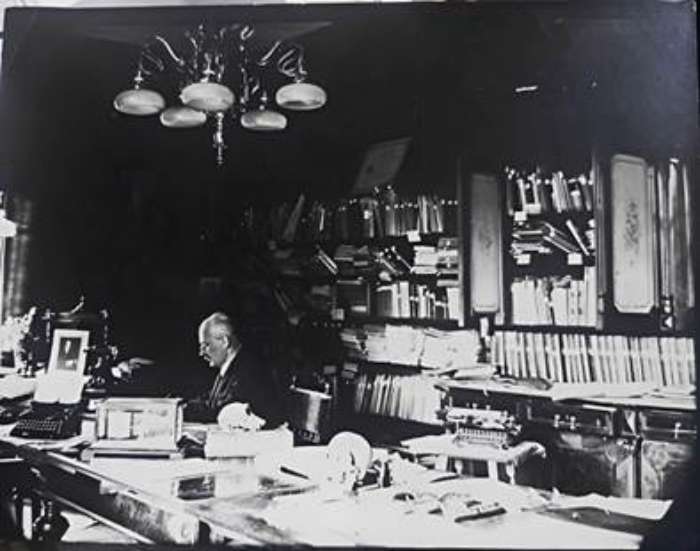Arthur Posnansky Library in La Paz (Bolivia)

One of the most important private libraries in Bolivia is the one that belonged to the military naval engineer Arthur Posnansky. Austro-Hungarian who arrived in Bolivia in 1880 to sail and trade transporting rubber in the Acre. During the conflict in this territory, President José Manuel Pando bought Posnansky's boat for the Bolivian army and for the help provided during this conflict he was named General of the Bolivian army and moved to the city of La Paz, the seat of government, in 1902.
With the approval of the Bolivian government, Posnansky obtained engineering work contracts in the Bolivian highlands traveling to Lake Titicaca, specifically the port of Guaqui. On that route, he was impressed with the ruins of Tiahuanaco. The remains of this highly developed culture led him to investigate and propose ideas about its origin. In that sense, he joined the La Paz intellectual elite by forming part of the Geographic Society of La Paz, establishing a great friendship with the Bolivian scientist Manuel Vicente Ballivián. During this period, the greatest development of Arthur Posnansky's personal library occurred, with books being an important complement to develop his approaches and publications.
In its library, which is currently dispersed in three different repositories, if not more, you can find ancient books printed in the 17th, 18th and 19th centuries. We were able to reveal a broad theme in his private library: pharmacopoeia, chemistry, religion, 19th century explorations; among others. Also important are its printed texts. He produced a significant number of brochures, books related to Tiahuanaco, quinoa, among others, using photographic images as illustrations in all of them, something new in Bolivia at that time.
Unfortunately, to date, no list or inventory of the library has been found that would allow us to evaluate, in general, the quantity and themes it contained. However, through historical research, cataloging and conservation of the texts produced by Posnansky, we can get closer to what his library was. No less important are the photographs and films recorded by Posnansky that are also part of that private collection.
As part of the organization of the Arthur Posnansky heritage library, with the help of the knowledge learned in the CODICIS project, we are revaluing this important private library from the beginning of the 20th century located in the city of La Paz (Bolivia).
Share on:
